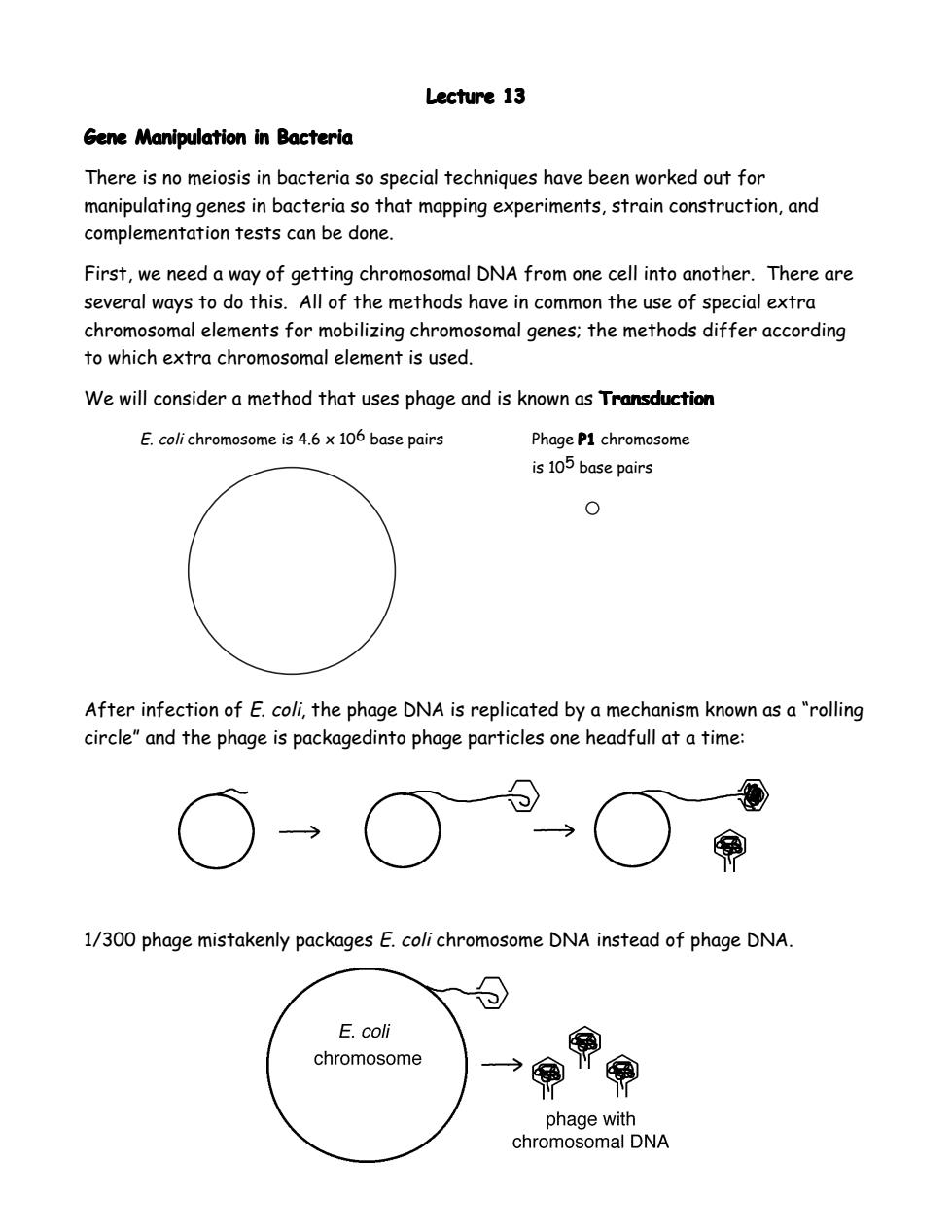正在加载图片...

Lecture 13 Gene Manipulation in Bacteria There is no meiosis in bacteria so special techniques have been worked out for manipulating genes in bacteria so that mapping experiments,strain construction,and complementation tests can be done. First,we need a way of getting chromosomal DNA from one cell into another.There are several ways to do this.All of the methods have in common the use of special extra chromosomal elements for mobilizing chromosomal genes;the methods differ according to which extra chromosomal element is used. We will consider a method that uses phage and is known as Transduction E.coli chromosome is 4.6 x 106 base pairs Phage P1 chromosome is 105 base pairs O After infection of E.coli,the phage DNA is replicated by a mechanism known as a "rolling circle"and the phage is packagedinto phage particles one headfull at a time: 1/300 phage mistakenly packages E.coli chromosome DNA instead of phage DNA. E.coli chromosome phage with chromosomal DNALecture 13 Gene Manipulation in Bacteria There is no meiosis in bacteria so special techniques have been worked out for manipulating genes in bacteria so that mapping experiments, strain construction, and complementation tests can be done. First, we need a way of getting chromosomal DNA from one cell into another. There are several ways to do this. All of the methods have in common the use of special extra chromosomal elements for mobilizing chromosomal genes; the methods differ according to which extra chromosomal element is used. We will consider a method that uses phage and is known as Transduction E. coli chromosome is 4.6 x 106 base pairs Phage P1 chromosome is 105 base pairs After infection of E. coli, the phage DNA is replicated by a mechanism known as a “rolling circle” and the phage is packagedinto phage particles one headfull at a time: 1/300 phage mistakenly packages E. coli chromosome DNA instead of phage DNA